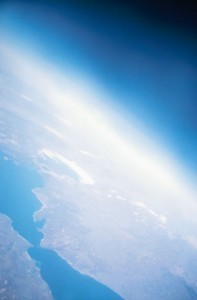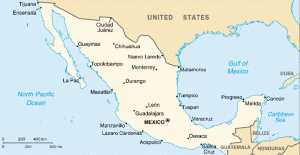Earth Atmosphere Thickness
An exact measurement of the thickness of the Earth’s  atmosphere is difficult, but most scientists put it at 300 miles (480 km). There are several layers and elements in the atmosphere, 80% of which are confined to 11 miles (16 km) of the planet’s surface.
atmosphere is difficult, but most scientists put it at 300 miles (480 km). There are several layers and elements in the atmosphere, 80% of which are confined to 11 miles (16 km) of the planet’s surface.
Boundaries and Air Pressure
There is no clear point when the atmosphere dissipates and outer space commences. The Karman line (62 miles (100 km) is usually used as the demarcation point between the atmosphere and outer space.
The air pressure is around 14.7 lbs every sq inch. The higher the altitude, the lower the air pressure will be. For example, the air pressure at 10,000 ft is 10 lbs per sq in. As the thickness of the Earth’s atmosphere is reduced, less oxygen becomes available, making breathing difficult.
Principal Layers of the Atmosphere
The layers are described from highest to lowest. The thermosphere refers to parts of the exosphere and the ionosphere.
The Exosphere
The exosphere begins at 400 miles (540 km) and reaches 800 miles (1,280 km). At the lower portion of the exosphere is the critical level of escape (low pressure). Both temperature and atmospheric pressure atoms are well spaced. This result is lower pressure.
The Ionosphere
This layer commences at 43-50 miles (70-80 km). The scope of this is about 400 miles (640 km). This layer earned its name due to the presence of ions. The auroras occur in this layer. The reason auroras occur is still unclear but the thickness of the Earth’s atmosphere at this level may have something to do with it.
The Mesosphere
This layer is between 31 to 50 miles (17 to 80 km) above the planet’s surface. Its most noticeable characteristic is the rapid drop of temperature.
The Stratosphere
This layer begins 11 to 31 miles (17 to 50 km) from the ground. There are no clouds here and the temperature goes up a bit. The ozone layer is situated here. High clouds like the cirrus and cirrocumulus are located in the lower portions of the stratosphere.
Between the stratosphere and the troposphere is the tropopause. It is the transition point between the two layers.
The Troposphere
The thickness of the Earth’s atmosphere at this level is 11 miles (17 km or 36,000 ft) and starts from the surface. It is here that clouds and weather forms.
Composition of the Atmosphere
The atmosphere has a mass of five quintillion kilograms (one followed by 18 zeroes). Nearly three quarters of it is in the troposphere. The elements in the atmosphere are nitrogen (780,840 ppmv (78.084%), oxygen (209,460 ppmv (20.946%), argon (9,340 ppmv (0.9340%), carbon dioxide (383 ppmv (0.0383%), neon (18.18 ppmv (0.001818%) and helium (5.24 ppmv (0.000524%).
Traces of methane, hydrogen, nitrous oxide, krypton, ozone, carbon monoxide and other elements are present as well. The atmosphere is also filled with greenhouse gases, ash, pollen, spray and other chemicals.
The thickness of the Earth’s atmosphere as outlined above is approximates and used for study and classification. In reality there is no distinct boundary existing in the atmosphere.





